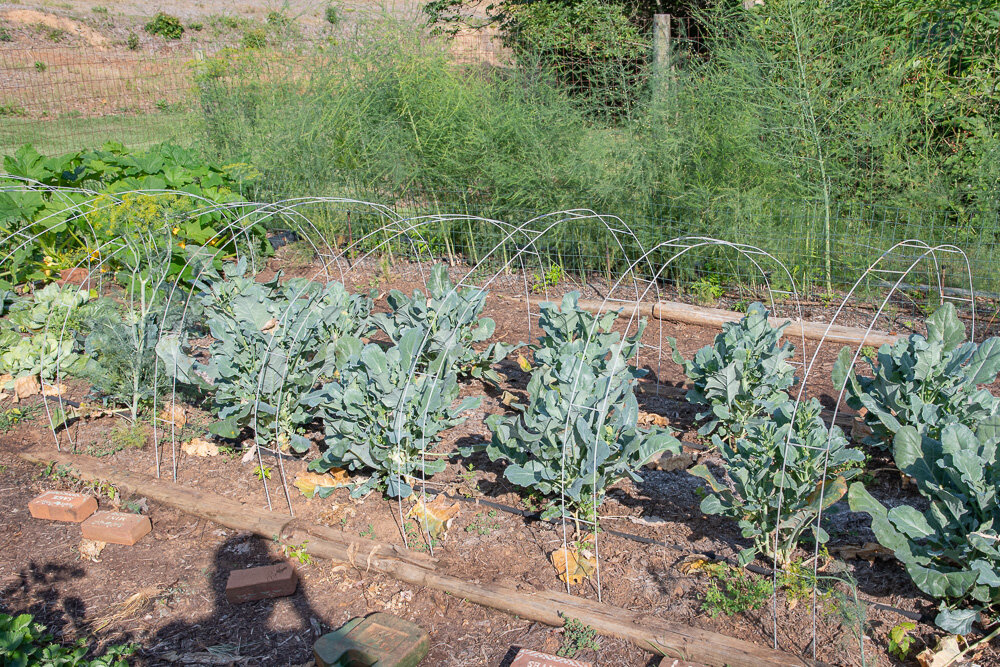by Mark Levisay
Here in central Virginia we’re blessed with a long frost free growing season. You can usually count on the period from mid-May until mid-October to be frost free, and crops such as spinach, lettuce, kale, cabbage and broccoli can survive some frost and be growing both earlier and later. Many of the crops we grow don’t take an entire growing season to go from planting to harvest so how do we maximize our garden’s production? I’ll give you a few examples of what I’m doing now.
Time to pull lettuce that has bolted in the hot weather.
Replace finished peas
Last week I pulled the last of my sugar snap pea plants out, as the hot weather had really burned them up. They were planted in the second half of March and took up their space for roughly three months. In their place I added some organic material and fertilizer and planted both green and yellow bush beans. These beans, according to the package, take about 55 days from sowing until harvest. (This information is on most seed packets, or in the seed catalog.) So, I should have a second crop of beans toward the end of August.
Bush green bean seeds just planted after pulling out the peas.
Still time for squash
Tomorrow I’m going to take the row cover off my broccoli and cabbage bed and pull those plants after picking the last broccoli side shoots. After adding organic matter and fertilizer I’ll plant a second batch of yellow squash, butternut squash and cucumbers. Yellow squash, zucchini and cucumbers all take between 45 and 60 days from sowing until harvest. Butternut squash will take 82 days or more but will still come in before our first frost. I have a row of lettuce that is not liking the heat too much, and once I pull the last of them, I’ll save that space until late July. Then I’ll plant a 3rd batch of bush beans which should mature before frost.
Broccoli plants after row cover removed. Still some side shoots to harvest before pulling the plants to make room for a row of squash plants.
Get plants off to a good start
There are a couple of things to think about with the succession plantings. Fertilizer will probably be required since your previous crop has used some of the nutrients during its growth cycle. Watering every day will be required (assuming we don’t get a good rain) to ensure good seed germination. Once the plants come up you can probably cut back on the watering a little.
Another consideration is shade caused by other crops. You can easily plant seeds on the south side of a row of tall plants like corn or tomatoes, but the north side of that same row may be too shady now that those plants have been growing for a while. Keep an eye out for insect pests, as they are more active with summer’s higher temperatures and may have come in to eat your initial crops.
I’ll do another post later in the summer about planting fall crops, which is just an extension of the succession planting idea. As we head into late August and September we’ll be talking about replacing spent summer crops with cool season plants like spinach, lettuce, peas, beets, broccoli and cabbage and the use of row covers to extend your growing season. Good luck with your new crops!
You can e-mail me with questions at marklevisay@gmail.com. If you’re having trouble with specific crops or individual plants, it’s very helpful to have photos of the problems, so please include them in your e-mails if possible.


